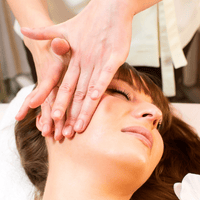National Back Awareness
Upper Back Pain
It all happens here
This is the part of the spine that we use most when we are sitting at our desks, driving our cars, reading, eating. When I say ‘using’ it’s almost a misnomer.
Our upper backs are actually moving very little. It is this lack of movement that can cause us pain in the long term.
We sit at our desk, shoulders forward fingers ready to type on our key boards, heads forward, upper back arched. Sometimes for hours at a time.
Our bodies take this input as a desired position and start to adapt accordingly. The body is always looking for efficiencies. To reduce energy expenditure. So it reduces blood supply to muscles, joints stop moving so nerves receive less innervation.
Muscles at the front of our bodies becoming shorter such as our pectorals.
Our spinal muscles become stretched and longer. And our neck muscles become shorter as they constantly lift our heads up to view the screen.
We do this day in day out for up to 8 hrs a day for months and then years! Then we go home and watch tv or use our laptops at home, or alternatively try and get the stress of our work out the system and go cycling and assume the exact same position.
Muscles working with a reduced blood supply work anaerobically and we get lactic acid build up. Over time these muscles lose their flexibility and become fibrotic (ropey) and can become inflamed. That causes us pain.
Top Tips to stop Upper Back Pain
To stop upper back pain – simple – change the inputs.
Break the static 8 hrs day. Stop every 30-45 mins and make your back and shoulders move. Your body will respond by increasing blood supply. Muscles will change to become more flexible. Joints and nerve innervation inputs will increase.
Here are three simple exercises you can do at work to start changing the inputs.
Pectoral Stretch
T-Spine Samba
T-Spine Side Bending
TIP: Choose exercises which will increase the mobility of your upper back. Swimming is excellent for this especially front crawl and back stroke. Certain pilates exercises are excellent at generating more mobility in the thoracic spine if done regularly too
 Hugo Firth
Hugo Firth
BOst, BSc, MA
NOTE: all advice and exercises are for guidance only. Every pain is different. These exercises may not agree with every back-pain complaint, so please stop immediately if pain arises. You are advised to seek professional help before following the advice or exercises.












